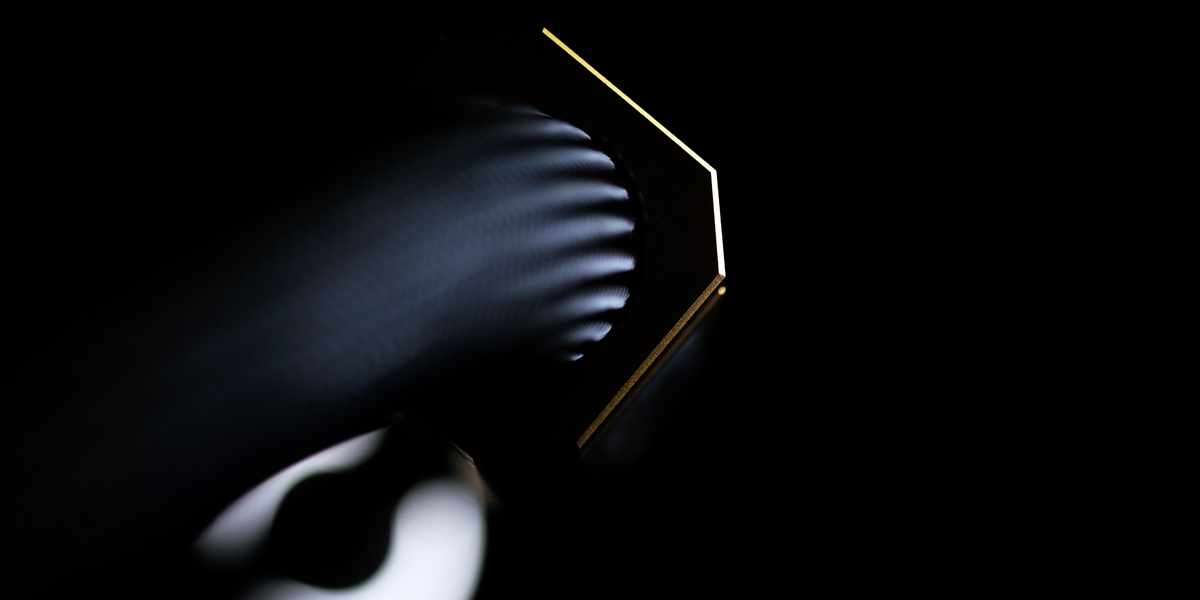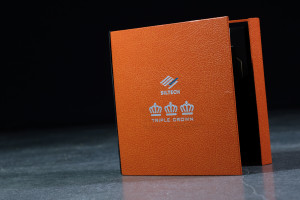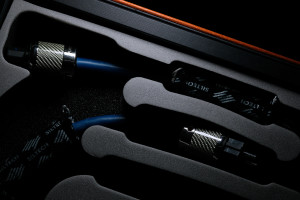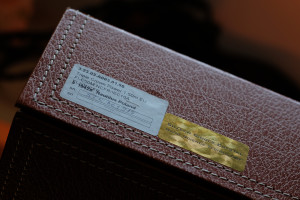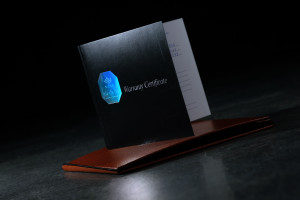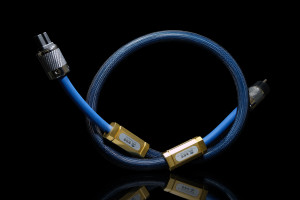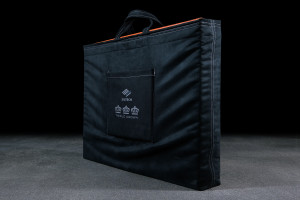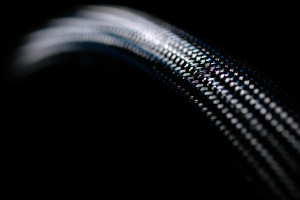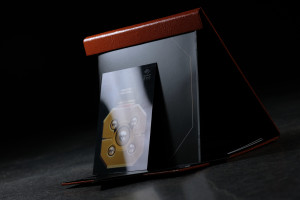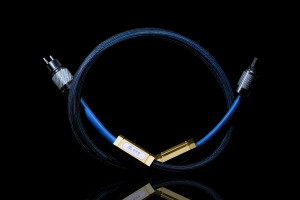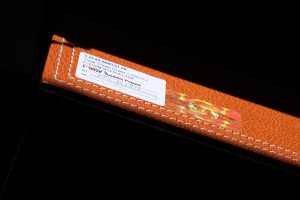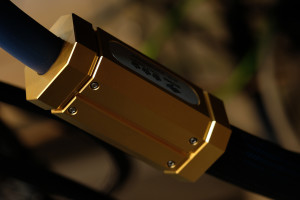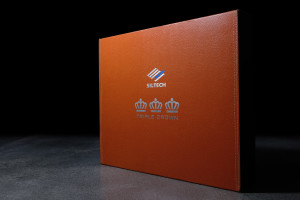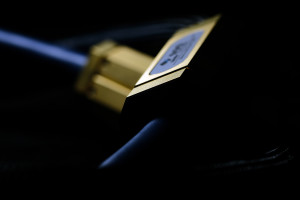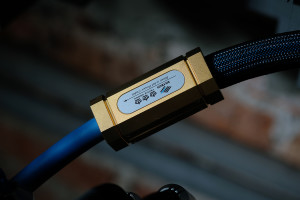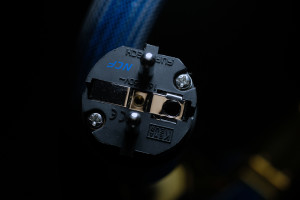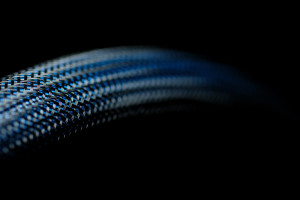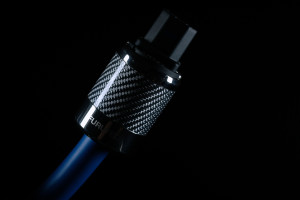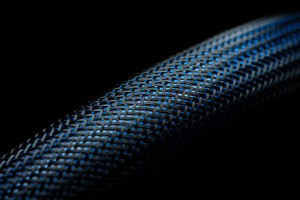Due to their importance, costly amplifiers, DACs or speakers oftentimes can be justified, on the contrary to expensive cables viewed as supportive measures of lower significance. But what about those of input comparable to major components? What then? Siltech Triple Crown has arrived, enjoy!
Introduction
Even though I knew this would eventually happen at some point, Siltech scored its debut at this site just recently. Decades of ongoing audio activity, constantly raising its own bar and giving competition something to think about, turned this audio house into a top shelf pick once the cable talk is on, which numerous press coverage and feedback from customers reflect rather well. There’s too much of it to fish for coincidence, which my own ears also excluded past getting familiar with the impressive Crown Princess anniversary model. This one not only swiftly escaped the usual pattern associated with silver conductors, but also met steep expectations. Prior to the two princesses’ arrival, I assumed that something of the sort would happen due to their significant ask, hence time we spent together passed pleasantly yet with no major surprises involved. Today’s item however is a very different story to tell. Privy and cursory take on such goods aside, I hadn’t had the faintest what to expect of a power cord as costly as a not too shabby second hand ride. That’s why all subconscious biases and expectations I might’ve had towards it simply didn’t survive in effect.
 This unscheduled material is a part of a bigger story, which started rather innocently from the Accuphase P-4500/C-2150 material published here. Some two or three days past its release, a local distributor called to ask whether I’d be interested in Siltech’s anniversary loom while the Japanese hardware was still at my place. Since my summer road map allowed, I said ‘aye’ to the idea to then follow with the Crown Princess article and mark its sibling – Crown Prince – as the next one in line. In the meantime I’ve heard a rather interesting story about a bit older and mains related Triple Crown specimen’s causative power to substantially increase the rank of any accompanying product in such a way, that ultimately the effect would best a higher tiered device of similar sort, yet fed with a power cord qualitatively worse. All this and quite regular contact with AC components provided nutritious food for thought, albeit consumed with more than a grain of salt. Of course politeness required to listen to my interlocutor with attention, but via a thick journo filter engaged. It kicks in especially during talks with distribution representatives, and amplifies once products along the lines of today’s are discussed. In such circumstances not a single story can be taken as is, not even the most interesting one, which made private investigation within my own four walls the only commonsensical route at this point. One word led to another and that’s how the two Triple Crown loaners were sent my way.
This unscheduled material is a part of a bigger story, which started rather innocently from the Accuphase P-4500/C-2150 material published here. Some two or three days past its release, a local distributor called to ask whether I’d be interested in Siltech’s anniversary loom while the Japanese hardware was still at my place. Since my summer road map allowed, I said ‘aye’ to the idea to then follow with the Crown Princess article and mark its sibling – Crown Prince – as the next one in line. In the meantime I’ve heard a rather interesting story about a bit older and mains related Triple Crown specimen’s causative power to substantially increase the rank of any accompanying product in such a way, that ultimately the effect would best a higher tiered device of similar sort, yet fed with a power cord qualitatively worse. All this and quite regular contact with AC components provided nutritious food for thought, albeit consumed with more than a grain of salt. Of course politeness required to listen to my interlocutor with attention, but via a thick journo filter engaged. It kicks in especially during talks with distribution representatives, and amplifies once products along the lines of today’s are discussed. In such circumstances not a single story can be taken as is, not even the most interesting one, which made private investigation within my own four walls the only commonsensical route at this point. One word led to another and that’s how the two Triple Crown loaners were sent my way.
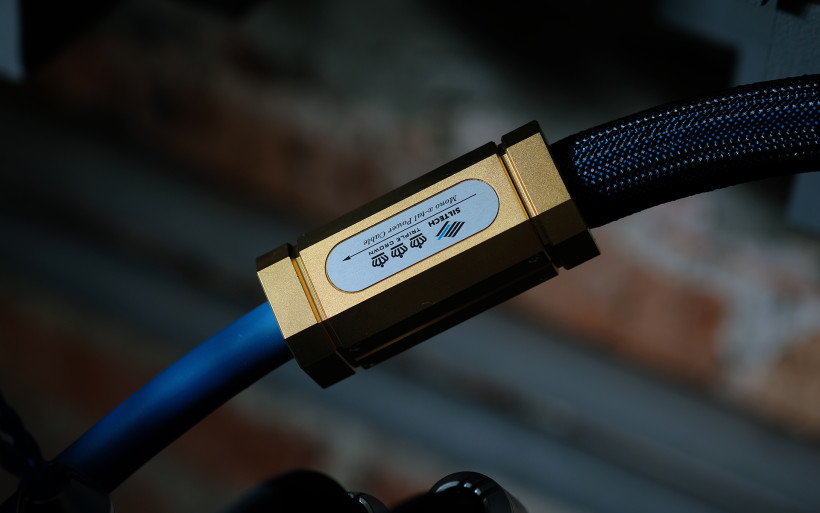 Siltech Triple Crown’s attainability and its local rep’s kindness aside, three key reasons hide behind this assignment. The first one is the fact that no longer than three years ago I wouldn’t be able to write anything constructive about such an item. Back then all I could possibly come up with would be informationally poor yet presumably florid poem that it sounds nice. Several adventures with hardware of the sort which happened since then, helped me to understand its input and efficiency at my place, in most cases higher in comparison to interconnects or speaker cables. Next in line is the meeting with Sven Boenicke in November 2017. We agree on many counts, similar things we like and I always take his feedback into account. During the local show the man used his prototype amp fed via Siltech Triple Crown, and to express his praise towards the latter I’d have to use vocabulary considered as inappropriate. In any case, the poker-faced Swiss didn’t hide his fondness for the Dutch item, which did the trick for me. And lastly, after my own Crown Princess ride, the question about any of its costliest kin’s performance was unavoidable. It’s safe to say that predictable curiosity led me to Siltech’s top tier. Since its power representative emerged on the horizon and none other, that was the best possible scenario for me.
Siltech Triple Crown’s attainability and its local rep’s kindness aside, three key reasons hide behind this assignment. The first one is the fact that no longer than three years ago I wouldn’t be able to write anything constructive about such an item. Back then all I could possibly come up with would be informationally poor yet presumably florid poem that it sounds nice. Several adventures with hardware of the sort which happened since then, helped me to understand its input and efficiency at my place, in most cases higher in comparison to interconnects or speaker cables. Next in line is the meeting with Sven Boenicke in November 2017. We agree on many counts, similar things we like and I always take his feedback into account. During the local show the man used his prototype amp fed via Siltech Triple Crown, and to express his praise towards the latter I’d have to use vocabulary considered as inappropriate. In any case, the poker-faced Swiss didn’t hide his fondness for the Dutch item, which did the trick for me. And lastly, after my own Crown Princess ride, the question about any of its costliest kin’s performance was unavoidable. It’s safe to say that predictable curiosity led me to Siltech’s top tier. Since its power representative emerged on the horizon and none other, that was the best possible scenario for me.
Build
Two unexpectedly large and rigid boxes arrived, both clad in leatherette and loaded with opening mechanisms based on nicely incorporated invisible magnets. Each quality velour bag per one item had a small pocket tailored to perfectly fit an insert with all the extras inside; a warranty card with hologram, handwritten product detail leaflet, manual and a short book about milestones associated with the Triple Crown family. Each box had foam form inside cut nicely to precisely match the main dish. The overall packaging scheme I’ve found appealing and it surely took someone a while to come up with such a lovely first impression. Even in spite of all this locked up in a drawer or basement shortly after the key item’s extraction. Most likely for years, this I can share with you as early as now.
 This review’s item emerged in 2015 for the very first time and its official debut happened two springs later, hence not too long ago, however back then Siltech’s been three decades in the business already. Many new similarly profiled cable houses start from the biggest guns available, namely products as expensive as they possibly can come up with to scale them down later on and reach broader audience like so. The Dutch operation’s road map paints the opposite picture, its progression route accordingly to R&D progress and new tools acquired. Siltech’s portfolio implies no rapid expansion but evolution carefully stretched in time from entry tiers towards higher ones, in most cases one step at a time. The anniversary series which encapsulates its company’s know-how changed this order just recently. Come to think of it that’s nothing shocking, at the moment it’s quite difficult to imagine goods which would occupy space above the already staggeringly costly Triple Crown family. A significant quality leap would have to be made for this to happen, but who knows? Perhaps in the future Edwin’s team will find a way to up their own game like so and four crowns will follow? Or something vastly different? Only time will tell.
This review’s item emerged in 2015 for the very first time and its official debut happened two springs later, hence not too long ago, however back then Siltech’s been three decades in the business already. Many new similarly profiled cable houses start from the biggest guns available, namely products as expensive as they possibly can come up with to scale them down later on and reach broader audience like so. The Dutch operation’s road map paints the opposite picture, its progression route accordingly to R&D progress and new tools acquired. Siltech’s portfolio implies no rapid expansion but evolution carefully stretched in time from entry tiers towards higher ones, in most cases one step at a time. The anniversary series which encapsulates its company’s know-how changed this order just recently. Come to think of it that’s nothing shocking, at the moment it’s quite difficult to imagine goods which would occupy space above the already staggeringly costly Triple Crown family. A significant quality leap would have to be made for this to happen, but who knows? Perhaps in the future Edwin’s team will find a way to up their own game like so and four crowns will follow? Or something vastly different? Only time will tell.
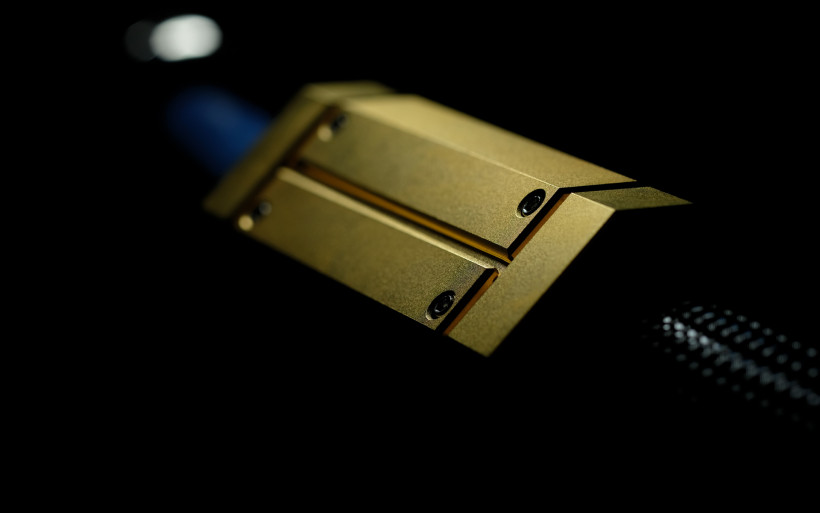 Siltech Triple Crown’s inside houses seven conductive solid-core veins based on the S8 grade (99,999999%) monocrystalline silver with no gold mixed in. Conductors of rectangular cross-section are cast at Siltech’s production line in Elst, accordingly to the in-house developed and patented technique known as X-tal. Internal geometry of today’s hero is Edwin’s sweet secret, though each of its conductors is insulated via low density Teflon dielectric filled with air. This method the Dutch team labeled as ACC (Air Cradle Construction). The whole Triple Crown series shares low inductance, resistance and capacity (18pF/m, that’s 80% less in comparison to Siltech’s own Double Crown) values.
Siltech Triple Crown’s inside houses seven conductive solid-core veins based on the S8 grade (99,999999%) monocrystalline silver with no gold mixed in. Conductors of rectangular cross-section are cast at Siltech’s production line in Elst, accordingly to the in-house developed and patented technique known as X-tal. Internal geometry of today’s hero is Edwin’s sweet secret, though each of its conductors is insulated via low density Teflon dielectric filled with air. This method the Dutch team labeled as ACC (Air Cradle Construction). The whole Triple Crown series shares low inductance, resistance and capacity (18pF/m, that’s 80% less in comparison to Siltech’s own Double Crown) values.
 The Triple Crown series was designed to be geometrically and mechanically as coherent as possible regardless of a deflection degree, to result in marginally low and constant distortion level. The amount and diameter of silver conductors in this particular range didn’t make the goal any easier. Siltech’s top shelf breed was also developed to neutralize magnetic field recognized by Edwin as the source of parasitic distortions, which influence hardware nearby and connections in-between. The man wanted to end up with a cable active in wide bandwidth to do the same job regardless of PSU types. The COMSOL software physics simulator platform developed by NASA was used to arrive there, but the Dutch R&D additionally involves many measuring tools and their own furnaces. For years Siltech has been rolling with in-house cast monocrystalline silver conductors instead of OEM wire.
The Triple Crown series was designed to be geometrically and mechanically as coherent as possible regardless of a deflection degree, to result in marginally low and constant distortion level. The amount and diameter of silver conductors in this particular range didn’t make the goal any easier. Siltech’s top shelf breed was also developed to neutralize magnetic field recognized by Edwin as the source of parasitic distortions, which influence hardware nearby and connections in-between. The man wanted to end up with a cable active in wide bandwidth to do the same job regardless of PSU types. The COMSOL software physics simulator platform developed by NASA was used to arrive there, but the Dutch R&D additionally involves many measuring tools and their own furnaces. For years Siltech has been rolling with in-house cast monocrystalline silver conductors instead of OEM wire.
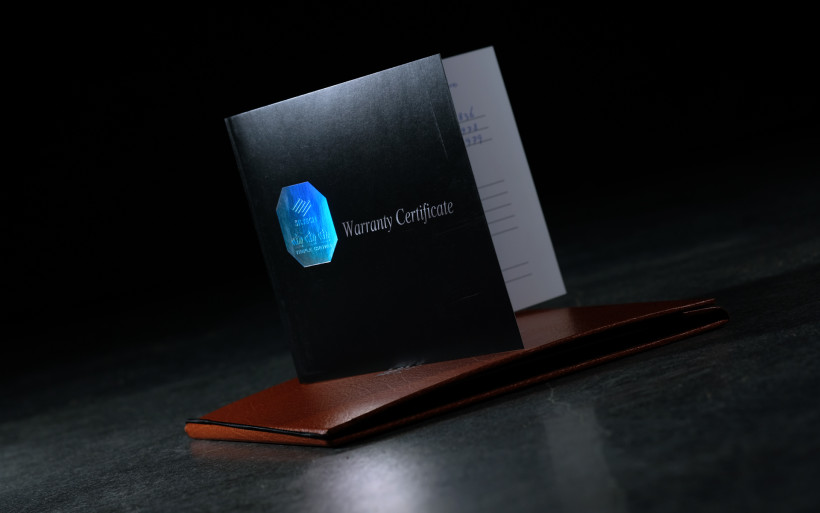 Due to its substantial thickness and mass, Siltech Triple Crown isn’t the easiest one to use and has to have enough space. On this count my LessLoss C-MARC is nowhere near as restrictive, however the Dutch product’s thickest section in-between its two large golden filtering elements is pleasantly bendy and that’s quite surprising. Truth told, however inconvenient to use any power cable might be, most likely it’ll remain in place for a long time once plugged in. That’s why any utility difficulties associated with such goods’ I view as a one-off negligible case and this review’s item was manageable enough for me to avoid reorganizing space behind my rack.
Due to its substantial thickness and mass, Siltech Triple Crown isn’t the easiest one to use and has to have enough space. On this count my LessLoss C-MARC is nowhere near as restrictive, however the Dutch product’s thickest section in-between its two large golden filtering elements is pleasantly bendy and that’s quite surprising. Truth told, however inconvenient to use any power cable might be, most likely it’ll remain in place for a long time once plugged in. That’s why any utility difficulties associated with such goods’ I view as a one-off negligible case and this review’s item was manageable enough for me to avoid reorganizing space behind my rack.
 Unlike the rest of the Triple Crown flock, its mains representative isn’t loaded with Siltech’s proprietary plugs, but has both its ends finished with Furutech’s high NCF series models; FI-50 NCF and FI-E50 NCF. Blue sections which run from these plugs to golden aluminium parts are stiff, on the contrary to the alike coloured thick snake found in-between these hefty boxes. This one also sports black braid on top. Both quality golden parts are visually nice, however their main role is vibration reduction. Even though the product can be used in one way only, directional arrows have found their place at plates stuck to aluminum cubes nonetheless. All in all, Siltech Triple Crown’s build quality is very high and it shows, on hand it feels like a very costly product.
Unlike the rest of the Triple Crown flock, its mains representative isn’t loaded with Siltech’s proprietary plugs, but has both its ends finished with Furutech’s high NCF series models; FI-50 NCF and FI-E50 NCF. Blue sections which run from these plugs to golden aluminium parts are stiff, on the contrary to the alike coloured thick snake found in-between these hefty boxes. This one also sports black braid on top. Both quality golden parts are visually nice, however their main role is vibration reduction. Even though the product can be used in one way only, directional arrows have found their place at plates stuck to aluminum cubes nonetheless. All in all, Siltech Triple Crown’s build quality is very high and it shows, on hand it feels like a very costly product.
Sound
In order to review Siltech Triple Crown, my daily setup was used; fidata HFAS-S10U as a storage/streamer and LampizatOr Pacific (KR Audio T-100 + KR Audio 5U4G Ltd. Ed.) on the D/A job. From there the signal went to the Accuphase P-4500/C-2150 team and then to either my Boenicke W8 or DearWolf Roe Deer floorstanders. Both Dutch power cords fed the Japanese set at first to then move to the digital section of my setup, and in each case were compared to LessLoss C-MARC mains cables. Every major component was plugged into the GigaWatt PC-3 SE EVO+ power conditioner, married to the main inlet via LC-3 EVO by the same manufacturer.
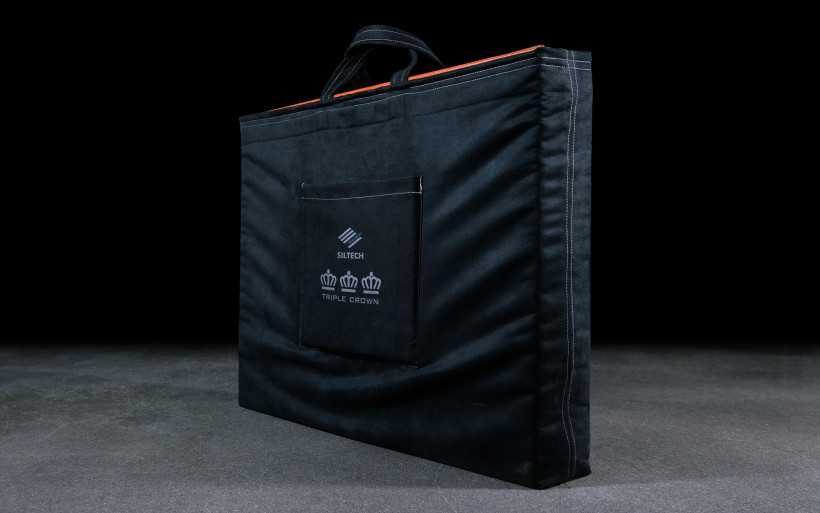 Prior to going any deeper into this chapter, familiarity with the LessLoss C-MARC review published here is highly recommended. As far as power cords go, this one is my current pole position holder. It introduced significant changes in my setup, dare I say obvious after several days of constant usage, and transparency fleshed out as its primary virtue. This translates to no clear input of its own, in favour of letting connected devices to do all the talking as they see fit. The C-MARC on duty introduces no tonal or textural shifts, hence expresses clearly anything out of ordinary on these counts. The Lithuanian sounds very smooth and provides hauntingly dark musical backdrop, which manifests itself as calmness and informational generosity, and all small subtle musical bits located somewhere far in the back gain extra presence points with this leash. Such seasoned and intelligent voicing has been Louis Motek’s goal from the very beginning, though my own understanding and appreciation towards it didn’t come right away. It was a learning curve, but finally the C-MARC revealed itself as a very useful tool in my work and has been on constant duty at my place since then.
Prior to going any deeper into this chapter, familiarity with the LessLoss C-MARC review published here is highly recommended. As far as power cords go, this one is my current pole position holder. It introduced significant changes in my setup, dare I say obvious after several days of constant usage, and transparency fleshed out as its primary virtue. This translates to no clear input of its own, in favour of letting connected devices to do all the talking as they see fit. The C-MARC on duty introduces no tonal or textural shifts, hence expresses clearly anything out of ordinary on these counts. The Lithuanian sounds very smooth and provides hauntingly dark musical backdrop, which manifests itself as calmness and informational generosity, and all small subtle musical bits located somewhere far in the back gain extra presence points with this leash. Such seasoned and intelligent voicing has been Louis Motek’s goal from the very beginning, though my own understanding and appreciation towards it didn’t come right away. It was a learning curve, but finally the C-MARC revealed itself as a very useful tool in my work and has been on constant duty at my place since then.
 My usual ride with all cables starts rather casually; this and that heard a bit here and there eventually morphs into something firm to focus on, and the more cable swaps are in the past, the closer I am to figuring out to where from this focal point my hardware was led. Not a single exercise conducted thus far was a puzzle instantly solved, accommodation on my end was always involved and that’s why each mains, USB or speaker cable’s input arrived in time. The C-MARC relatively early revealed itself in its full glory, yet its usefulness at my place took a fair bit longer. In comparison, today’s hero introduced itself in a vastly different and far more intense manner to mark its very expressive presence right away. No subtle work along the lines of ‘a bit here and there too’ occurred with this one, but fully blown intensity instead. Triple Crown’s bold attitude caught me off guard, thus far I simply wasn’t aware of any power cable capable of promptly singing this firmly and strongly. This truly was something.
My usual ride with all cables starts rather casually; this and that heard a bit here and there eventually morphs into something firm to focus on, and the more cable swaps are in the past, the closer I am to figuring out to where from this focal point my hardware was led. Not a single exercise conducted thus far was a puzzle instantly solved, accommodation on my end was always involved and that’s why each mains, USB or speaker cable’s input arrived in time. The C-MARC relatively early revealed itself in its full glory, yet its usefulness at my place took a fair bit longer. In comparison, today’s hero introduced itself in a vastly different and far more intense manner to mark its very expressive presence right away. No subtle work along the lines of ‘a bit here and there too’ occurred with this one, but fully blown intensity instead. Triple Crown’s bold attitude caught me off guard, thus far I simply wasn’t aware of any power cable capable of promptly singing this firmly and strongly. This truly was something.
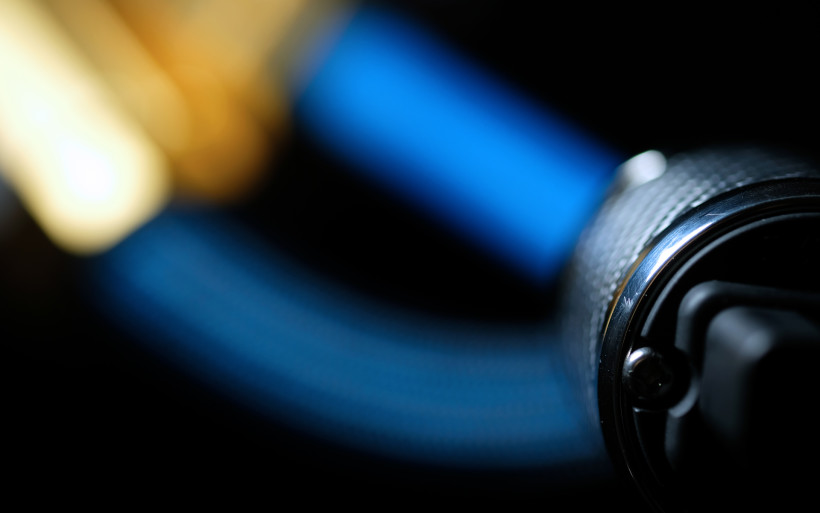 Once the introductory shock settled down, it was time to conduct the more thorough investigation and one discovery in particular stood above anything else at that time. Albeit voiced differently, both contestants proved to be very similar on one specific count. Inherently silent and free from any grain, the C-MARC extracts nuances naturally and effortlessly to then apply them tastefully… and so does the Dutch. One wouldn’t expect to find silence and dirt removal as main tools of a performer as expressively and instantly audible as today’s, yet these measures it clearly exploited to provide gorgeously black canvas for everything else just as its opponent. After numerous swaps between the two, it became apparent that in musical backdrop both Louis Motek and Edwin Rijnveld recognized the foundation mandatory for everything else to flourish. But how they purposely addressed this core aspect via very different technical means is the most interesting thing of them all. As far as I’m concerned, this has nothing to do with coincidence, but everything with experience and awareness of what to do exactly early on in order to reach further goals.
Once the introductory shock settled down, it was time to conduct the more thorough investigation and one discovery in particular stood above anything else at that time. Albeit voiced differently, both contestants proved to be very similar on one specific count. Inherently silent and free from any grain, the C-MARC extracts nuances naturally and effortlessly to then apply them tastefully… and so does the Dutch. One wouldn’t expect to find silence and dirt removal as main tools of a performer as expressively and instantly audible as today’s, yet these measures it clearly exploited to provide gorgeously black canvas for everything else just as its opponent. After numerous swaps between the two, it became apparent that in musical backdrop both Louis Motek and Edwin Rijnveld recognized the foundation mandatory for everything else to flourish. But how they purposely addressed this core aspect via very different technical means is the most interesting thing of them all. As far as I’m concerned, this has nothing to do with coincidence, but everything with experience and awareness of what to do exactly early on in order to reach further goals.
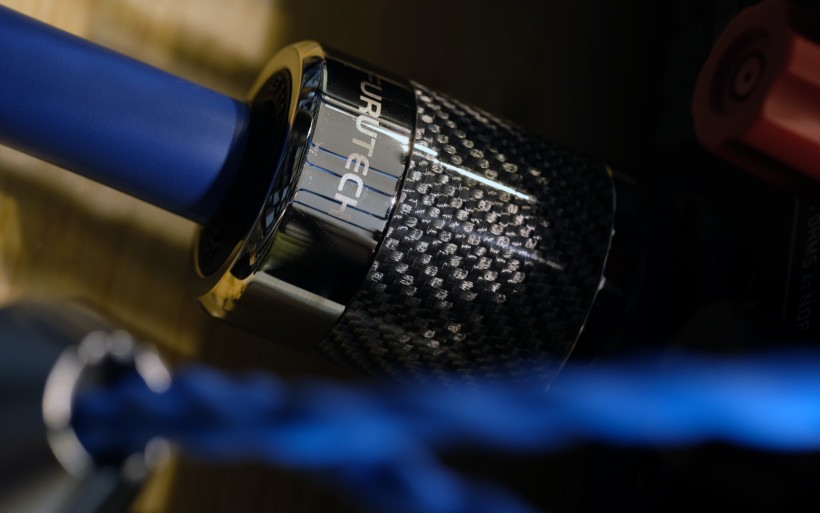 Untrained ears might find intentionally silent cables rather dim. Such goods with their tonal centre falsely viewed as low can lead to cravings towards illumination injection, so the proverbial musical window opened up wider can let more air in along with particles from the outside world. Both designers said ‘nay’ to this tricky idea, which revealed their products’ refinement instead, at least that’s how I see it. Buttoned up neat music background results in easier intake of musical content, though hardware nearby has to be up to the task to have the above-mentioned window fully open. That’s why C-MARC in my setup competent on this specific count I view as very resolving. However the as equally silent yet not any brighter Triple Crown extracts every bit of content in far easier, clearer and immediate fashion, still. My reference mains leash paints darker, less visible and more polite picture in comparison. But what’s truly beyond me at the moment is the more resolving Dutch’s heftier and more substantial approach on top of that; musical outlines it fills with more saturated and livelier pigment, and sings far more pronouncedly and intensely to be easily viewed as more sensible, palpable and also exciting. This confession one could take as this item’s colourated behaviour and strong character of its own, which is fair, though my ears lean heavily towards firm contribution delivered utmost competently, and free from anomalies nonetheless. The beauty of Triple Crown’s work is its execution with no harm to music itself; there’s more of it, that’s for sure, but with no manipulative flashiness or abnormal stunts on the menu. Instead of bandwidth alterations, the Dutch releases its potency via imaging, calmness, inner tonal expolsiveness and generosity to then top all this with dynamic grandeur beyond reach of the Lithuanian. And lastly, if a recording is off in one way or another, with Siltech’s TOTL specimen that’s heard as well.
Untrained ears might find intentionally silent cables rather dim. Such goods with their tonal centre falsely viewed as low can lead to cravings towards illumination injection, so the proverbial musical window opened up wider can let more air in along with particles from the outside world. Both designers said ‘nay’ to this tricky idea, which revealed their products’ refinement instead, at least that’s how I see it. Buttoned up neat music background results in easier intake of musical content, though hardware nearby has to be up to the task to have the above-mentioned window fully open. That’s why C-MARC in my setup competent on this specific count I view as very resolving. However the as equally silent yet not any brighter Triple Crown extracts every bit of content in far easier, clearer and immediate fashion, still. My reference mains leash paints darker, less visible and more polite picture in comparison. But what’s truly beyond me at the moment is the more resolving Dutch’s heftier and more substantial approach on top of that; musical outlines it fills with more saturated and livelier pigment, and sings far more pronouncedly and intensely to be easily viewed as more sensible, palpable and also exciting. This confession one could take as this item’s colourated behaviour and strong character of its own, which is fair, though my ears lean heavily towards firm contribution delivered utmost competently, and free from anomalies nonetheless. The beauty of Triple Crown’s work is its execution with no harm to music itself; there’s more of it, that’s for sure, but with no manipulative flashiness or abnormal stunts on the menu. Instead of bandwidth alterations, the Dutch releases its potency via imaging, calmness, inner tonal expolsiveness and generosity to then top all this with dynamic grandeur beyond reach of the Lithuanian. And lastly, if a recording is off in one way or another, with Siltech’s TOTL specimen that’s heard as well.
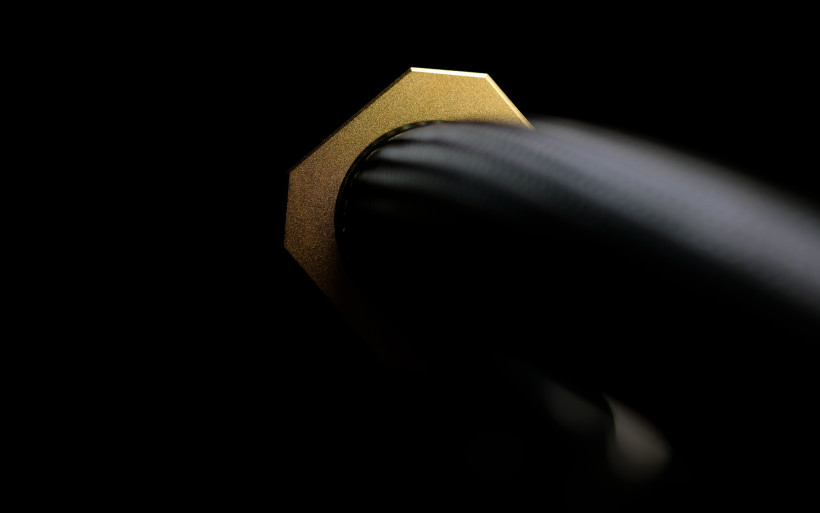 Today’s item reaches lower than my reference cable, kicks substantially harder, is tighter on the very bottom and feistier, though also bloomier and texturally more complex, dare I say phenomenal on this count. To move up, the former also coats i.e. vocals or guitars with livelier tissue to provide on-stage result more material and tangible. Triple Crown also handles upstairs in remarkably smooth and decaying way, with quality music on the menu never piercing, overly hot or sharp. To be frank, power snakes by LessLoss do similar things, but again the key disparity is in their far subtler less audible input. The similar notion I also had on the imaging count and virtual sound sources’ portrayal. Siltech’s item serves all shapes richer, more moist and visible to then set them in space breathing via more voluminous lungs.
Today’s item reaches lower than my reference cable, kicks substantially harder, is tighter on the very bottom and feistier, though also bloomier and texturally more complex, dare I say phenomenal on this count. To move up, the former also coats i.e. vocals or guitars with livelier tissue to provide on-stage result more material and tangible. Triple Crown also handles upstairs in remarkably smooth and decaying way, with quality music on the menu never piercing, overly hot or sharp. To be frank, power snakes by LessLoss do similar things, but again the key disparity is in their far subtler less audible input. The similar notion I also had on the imaging count and virtual sound sources’ portrayal. Siltech’s item serves all shapes richer, more moist and visible to then set them in space breathing via more voluminous lungs.
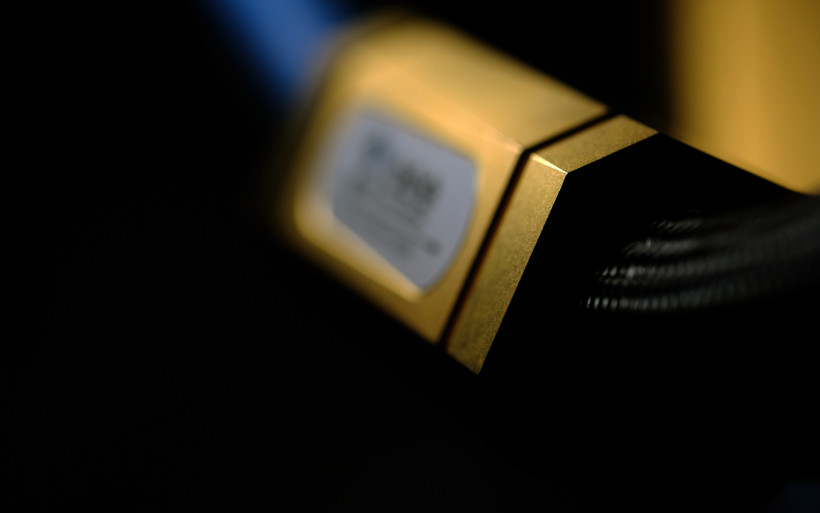 The more shifts from one product to another were in the past, the clearer the list of Triple Crown’s most prominent virtues became; truly effortless music differentiation, even tiniest bits in it showcased with ease, textural generosity, momentum and expressiveness which makes the view very much alive. At some point it got to me that Siltech’s item merged traits which either don’t happen all at once, or even if so they’re not this evenly served, to then intensify them and turn the result pretty much upside down in positive sense of this description. Long story’s short, Triple Crown’s tremendous work put it on the significance scale along with not accessories, but most key components involved. From this bunch I’d exclude only speakers and maybe my D/A machine. No other power item or any other accessory I’m familiar with did as much as the Dutch and, let me stress this yet again, several weeks back I honestly deemed this impossible. That’s why this assignment’s educational value is my most precious privy gain. Now I simply know more.
The more shifts from one product to another were in the past, the clearer the list of Triple Crown’s most prominent virtues became; truly effortless music differentiation, even tiniest bits in it showcased with ease, textural generosity, momentum and expressiveness which makes the view very much alive. At some point it got to me that Siltech’s item merged traits which either don’t happen all at once, or even if so they’re not this evenly served, to then intensify them and turn the result pretty much upside down in positive sense of this description. Long story’s short, Triple Crown’s tremendous work put it on the significance scale along with not accessories, but most key components involved. From this bunch I’d exclude only speakers and maybe my D/A machine. No other power item or any other accessory I’m familiar with did as much as the Dutch and, let me stress this yet again, several weeks back I honestly deemed this impossible. That’s why this assignment’s educational value is my most precious privy gain. Now I simply know more.
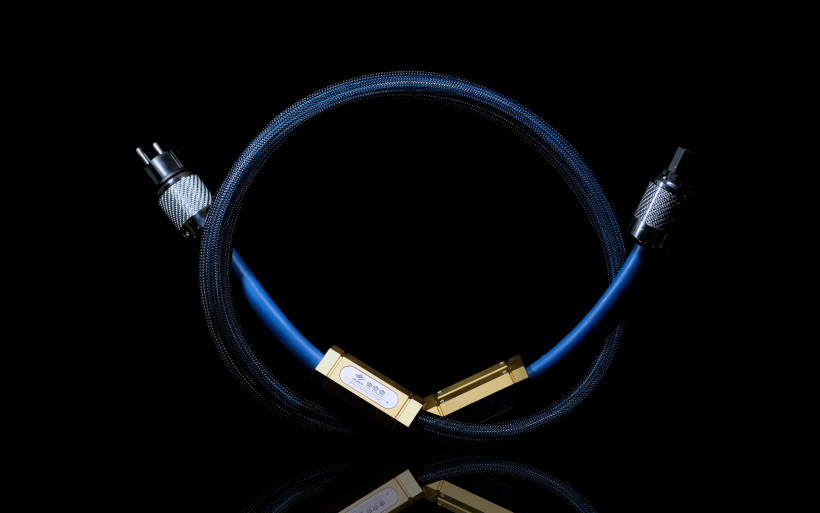 To now briefly frame my reference C-MARC in the context of today’s hero, on the fundamental silencing level they’re similar. But once everything else is on the table, the latter sits far higher via substantially more audible work and inner potency. This key aspect strongly in favour of Triple Crown turned it into what it is; a substantial improver of any component I was able to try with it, a game changer of a cable. If locked in a room full of skeptics, forced to showcase obvious differences between such goods and limited to just one item, I’d use today’s as my weapon of choice with no hesitation.
To now briefly frame my reference C-MARC in the context of today’s hero, on the fundamental silencing level they’re similar. But once everything else is on the table, the latter sits far higher via substantially more audible work and inner potency. This key aspect strongly in favour of Triple Crown turned it into what it is; a substantial improver of any component I was able to try with it, a game changer of a cable. If locked in a room full of skeptics, forced to showcase obvious differences between such goods and limited to just one item, I’d use today’s as my weapon of choice with no hesitation.
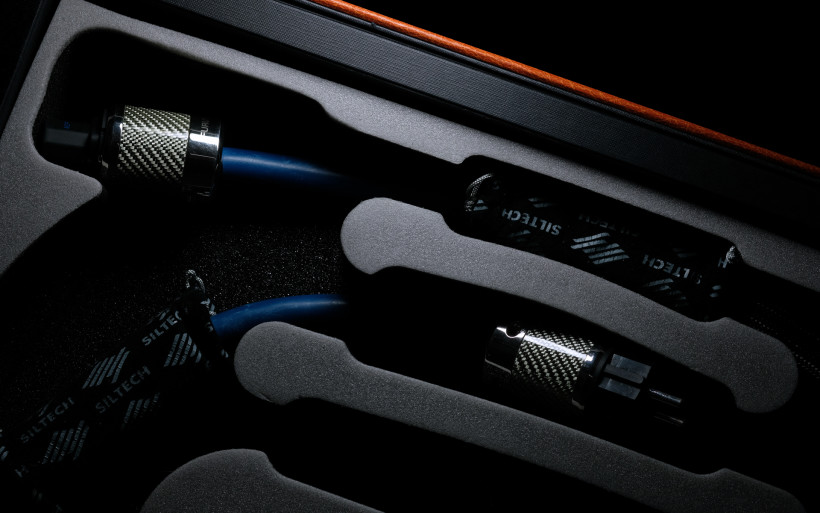 This report’s item just recently proved to be very useful during the DearWolf Roe Deer assignment. Due to passive membranes on this local item’s rear, in order to gain downstairs presence it has to be coupled with a wall, which then severely limits on-stage depth. The Polish animal can provide the best of both worlds, however pulling it off is a task to behold and cables used daily by yours truly didn’t cut it. Then Siltech’s anniversary family arrived and made the result noticeably better, though far from satisfactory still. Then the two Triple Crown cords jumped on-board to feed the Accuphase set and this changed a lot.
This report’s item just recently proved to be very useful during the DearWolf Roe Deer assignment. Due to passive membranes on this local item’s rear, in order to gain downstairs presence it has to be coupled with a wall, which then severely limits on-stage depth. The Polish animal can provide the best of both worlds, however pulling it off is a task to behold and cables used daily by yours truly didn’t cut it. Then Siltech’s anniversary family arrived and made the result noticeably better, though far from satisfactory still. Then the two Triple Crown cords jumped on-board to feed the Accuphase set and this changed a lot.
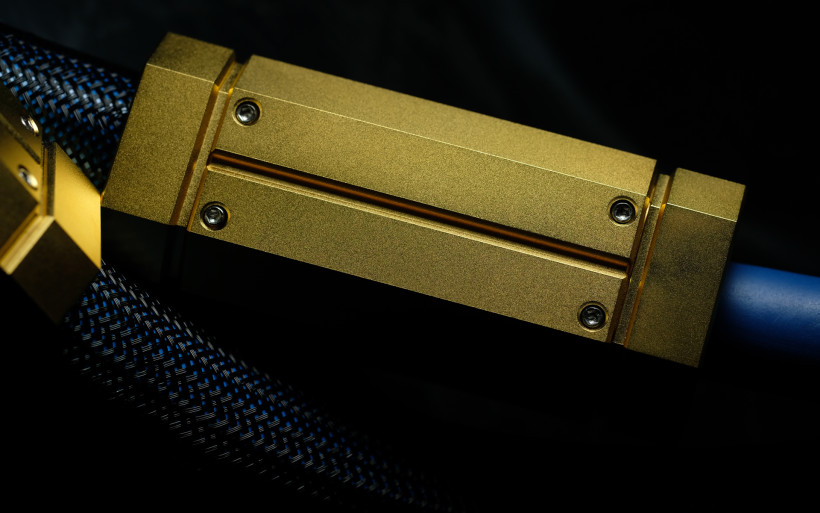 No major revolution happened, however the previously unreachable golden middle finally became visible. This translates to the first row more explicit, but the major difference occurred in livelier and more breathing space around sound sources located in there, which made them more tangible, fleshier and outlined better in the process. Due to quality and presence increase, plus airier image on the sides and back, the closest line of visible shapes as uniformly arranged as usual now wasn’t viewed as flat, which resulted in a significant move upwards on spatial music perception. Roe Deer’s depth-to-bass ratio wasn’t ideal still, but now good enough to spot clear upgrades on many fronts and properly grasp these speakers’ potential. But most importantly, in this act the two Dutch cords played the part of no petite meta shifters but major enablers, that’s the main takeaway.
No major revolution happened, however the previously unreachable golden middle finally became visible. This translates to the first row more explicit, but the major difference occurred in livelier and more breathing space around sound sources located in there, which made them more tangible, fleshier and outlined better in the process. Due to quality and presence increase, plus airier image on the sides and back, the closest line of visible shapes as uniformly arranged as usual now wasn’t viewed as flat, which resulted in a significant move upwards on spatial music perception. Roe Deer’s depth-to-bass ratio wasn’t ideal still, but now good enough to spot clear upgrades on many fronts and properly grasp these speakers’ potential. But most importantly, in this act the two Dutch cords played the part of no petite meta shifters but major enablers, that’s the main takeaway.
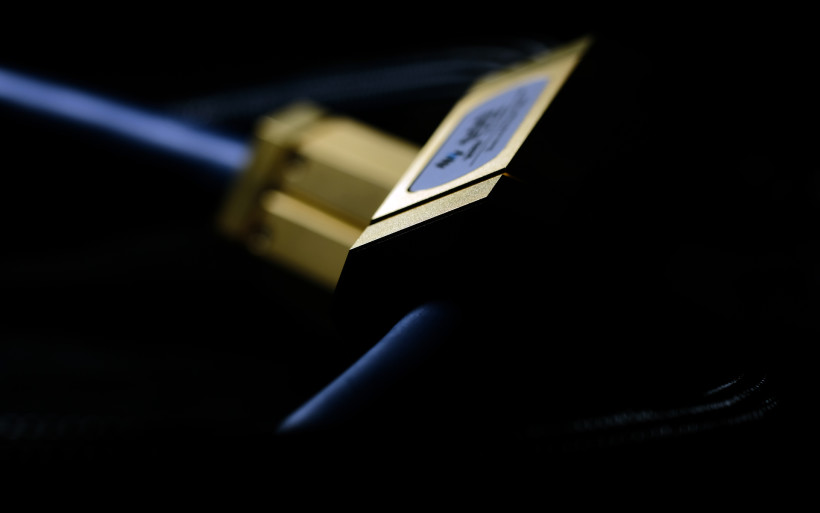 Siltech Triple Crown and LessLoss C-MARC used alternately with my reference DAC was the last thing to do. The magnitude of all following changes was similarly significant, however their character shifted a bit. The Dutch cable emphasized dynamic contrasts in music and its downstairs department it pressed harder. During the “Keep it Together” track by How to Destroy Angels, bass bloomier and served more swiftly resulted in stronger chest massage, which at this point wasn’t too surprising. The Japanese hardware provided the sensation already, yet my D/A converter showed it more explicitly than thus far. Probably the biggest disparity between both cables occurred on the nuance extraction count. The Triple Crown didn’t magically introduce any extra small bits hid in music, but made those already there more visible, and then raised the bar via fleshier key sound sources; texturally more generous, livelier and audibly finer separated one from another. Both cables displayed all layers one by one easily as expected, but today’s did so even more effortlessly. Its input yet again was without any alterations in musical content itself; all repertoire sounded as per usual as a whole, but on-stage order and substance undeniably went up with this product.
Siltech Triple Crown and LessLoss C-MARC used alternately with my reference DAC was the last thing to do. The magnitude of all following changes was similarly significant, however their character shifted a bit. The Dutch cable emphasized dynamic contrasts in music and its downstairs department it pressed harder. During the “Keep it Together” track by How to Destroy Angels, bass bloomier and served more swiftly resulted in stronger chest massage, which at this point wasn’t too surprising. The Japanese hardware provided the sensation already, yet my D/A converter showed it more explicitly than thus far. Probably the biggest disparity between both cables occurred on the nuance extraction count. The Triple Crown didn’t magically introduce any extra small bits hid in music, but made those already there more visible, and then raised the bar via fleshier key sound sources; texturally more generous, livelier and audibly finer separated one from another. Both cables displayed all layers one by one easily as expected, but today’s did so even more effortlessly. Its input yet again was without any alterations in musical content itself; all repertoire sounded as per usual as a whole, but on-stage order and substance undeniably went up with this product.
Summary
Thus far I viewed cables as fairly mild manipulators of my system’s voicing; tools audible, yet on potency count not comparable to swaps associated with any of its key components. Siltech Triple Crown proved me wrong, it single-handedly and eloquently turned my cable worldview upside down, most likely for years to come.
The second paragraph of each summary I usually devote to a given item’s build quality, functionality etc., however this time around it seems trivial and not fitting at all. Today’s hero is made well, visually luxurious and so is its packaging, simple as that. However, these criteria of minor importance aren’t capable of justifying colossal ask of this or any other similar cable. Such goods should be judged with our ears exclusively, the proof is in the pudding, and Siltech’s TOTL mains leash is tasty and sophisticated enough to secure no less than three Michelin stars easily. To plug it in, then sit comfortably and just have a listen is all it takes to get the memo. Once that’s sorted, the question about such a spectacular result achievable for lesser coin via different cable means is most likely next in line. After taking into account every such an item I’m familiar with, I highly doubt it.
This might sound a bit odd, but I strongly think that I’ve heard enough over the years to now grasp why Siltech Triple Crown is this pricey. Potency is the key word here. Not flavouring shifts in one direction or the other, that’s a vastly different and synergy related subject, but their truly shocking presence, to my ears of magnitude quite comparable to a major hardware shift. That’s the reason. At the moment, not only I know no other audio cable as efficient and expressive as Edwin’s top shelf power cord, but also not a single one any close to it on these counts. A product this impressive allows its makers to play the game of stakes as high as they please, whereas those lucky few financially capable of sitting at the same table I can only sincerely congratulate. After several utmost enjoyable days spent with the two Siltech Triple Crown specimens, now I simply understand that there’s a very good reason for that. ‘Till next time.
Associated equipment:
- Amplifier: Accuphase P-4500, Kinki Studio EX-M1
- Preamplifier: Accuphase C-2150
- DAC: LampizatOr Pacific (KR Audio T-100 + KR Audio 5U4G Ltd. Ed.)
- Speakers: Boenicke Audio W8, P&D Acoustic Roe Deer
- Transport: fidata HFAS-S10U
- Speaker cables: Audiomica Laboratory Celes Excellence, LessLoss C-MARC
- Interconnects: Audiomica Laboratory Erys Excellence
- Power supply: Gigawatt PC-3 SE EVO+, Gigawatt PF-2 + Gigawatt LC-2 MK2 + Forza AudioWorks Noir Concept/Audiomica Laboratory Ness Excellence/LessLoss C-MARC
- Rack: Franc Audio Accesories Wood Block Rack
- Music: NativeDSD
Retail prices of reviewed components in EU (incl. VAT):
- Siltech Triple Crown (1,5m): €15’600
Manufacturer: Siltech


